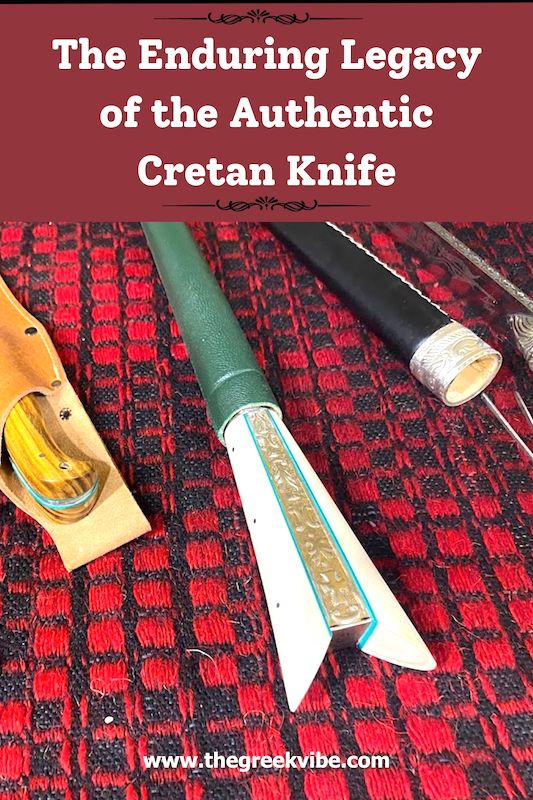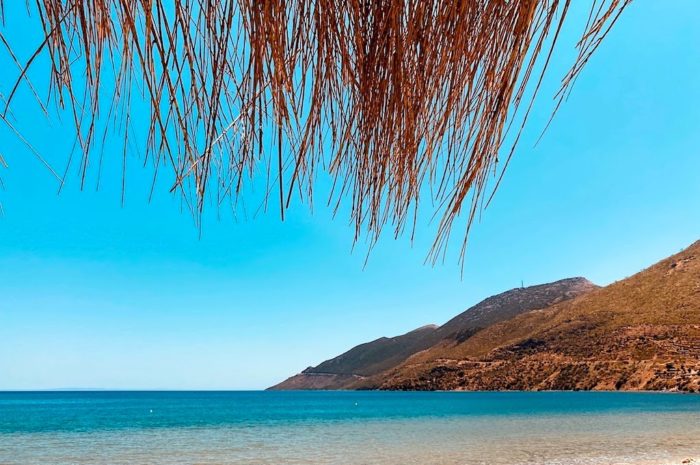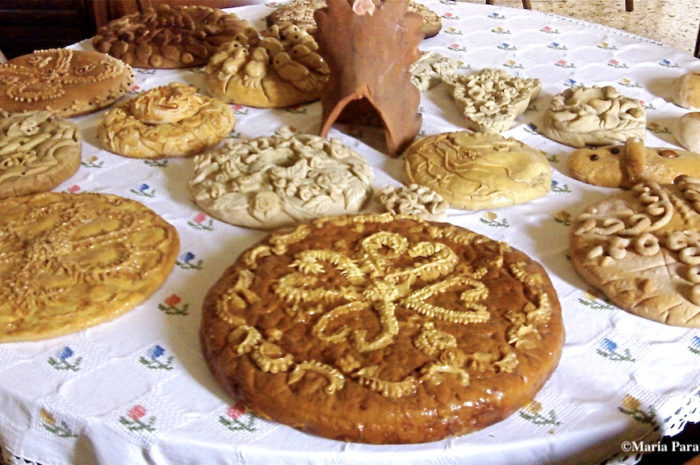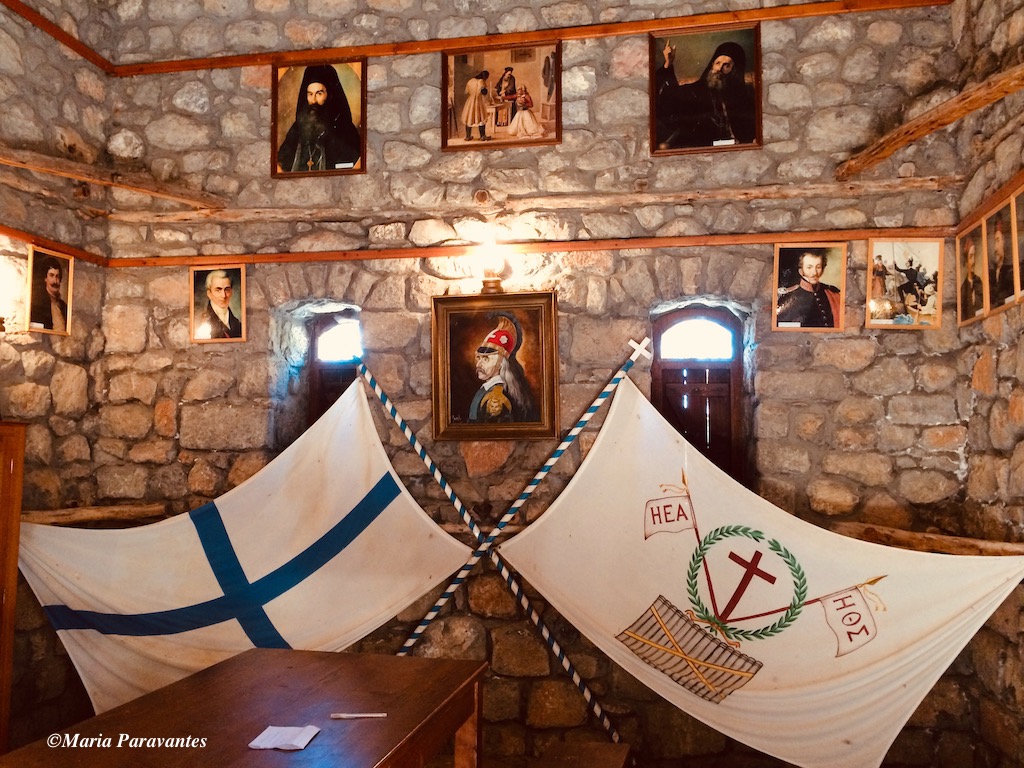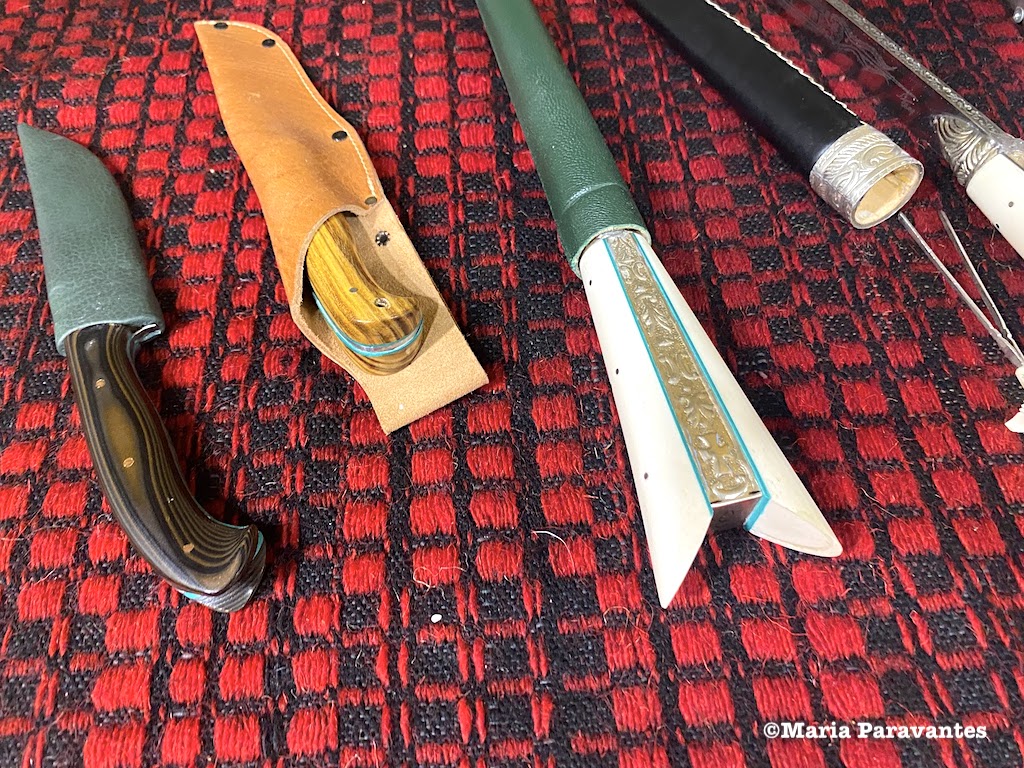
On the Greek island of Crete, there is nothing more telling of a man’s character than the knife he carries with him. The Cretan knife has a long and interesting story to tell. The tradition goes back hundreds of years when knives were necessary for daily tasks and protection. The Cretan knife however evolved into something much more… it became a symbol of heritage and honor and a very personal item custom-made to match the world view of its owner.
Cretan Knife Tales
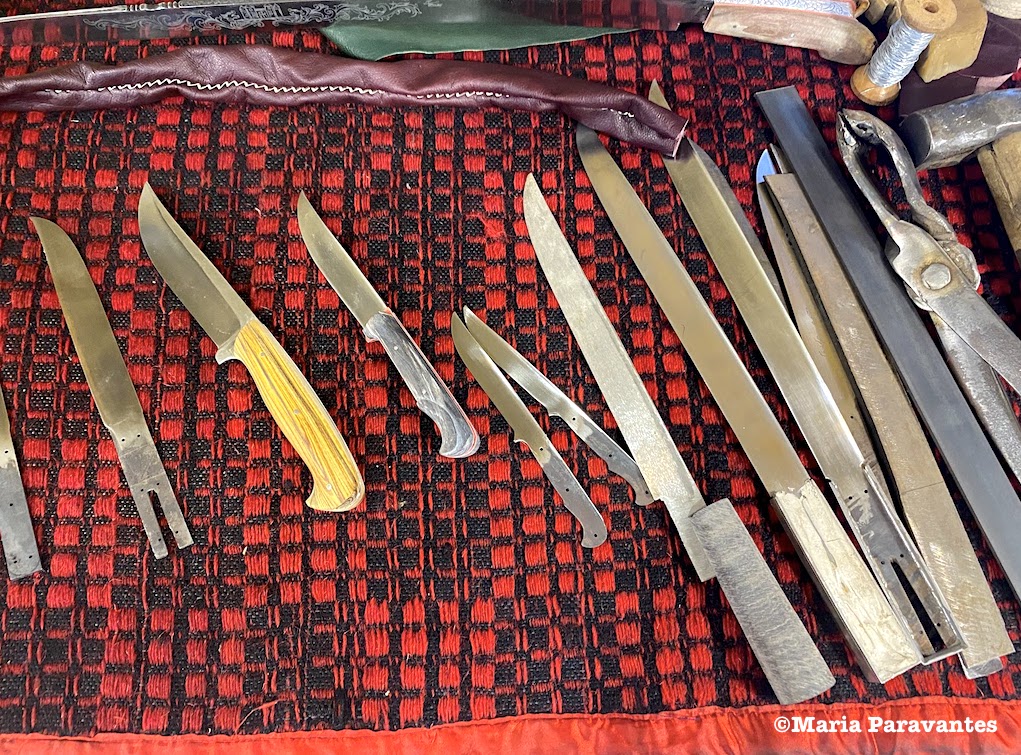
I first understood the meaning of the Cretan knife decades ago during my first trip to Crete, Greece’s largest island. Back then, the southern part of the island was hard to get to; only possible via narrow roads made for goats and not cars.
At some point after hours of driving I reached a village and stopped for directions. Of course, the “kafeneio” (coffee shop) owner insisted I sit for a raki and some cheese. As he bent over to place the raki on the table I caught a glimpse of a knife attached to his belt. “So that’s it,” I thought to myself. “You’re done.”
👉🏼 Find the best hotel deals on Crete for you
Since then, I’ve met dozens of Cretans, young and old, and yes, they are all very fond of their knives and many still carry one with them. This reflects the importance of the Cretan knife in local culture and tradition.
The History of the Cretan Knife
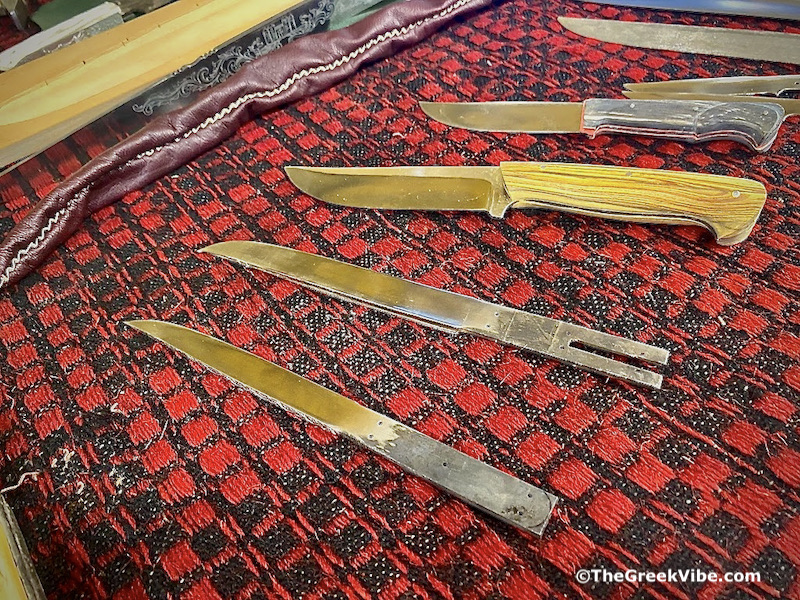
Knife making on Crete dates back to the Minoan civilization (3100-1100 BC) which thrived mainly in Knossos, Phaistos, Zakros, Malia, and Hagia Triada and was believed to be Europe’s first civilization.
The first unique Cretan knives as we know them today – the famed “saita” – were first made in the late 18th century influenced by the “bitsak” knives used by the Ottoman Turks who had conquered Crete in 1669. The knives are made pretty much in the same way as back then. Initially, the Cretan knife was used for farming (known as the “voskomachaira”), chores, and protection. Let’s not forget, most of the islanders were either fishermen or farmers living in harsh conditions.
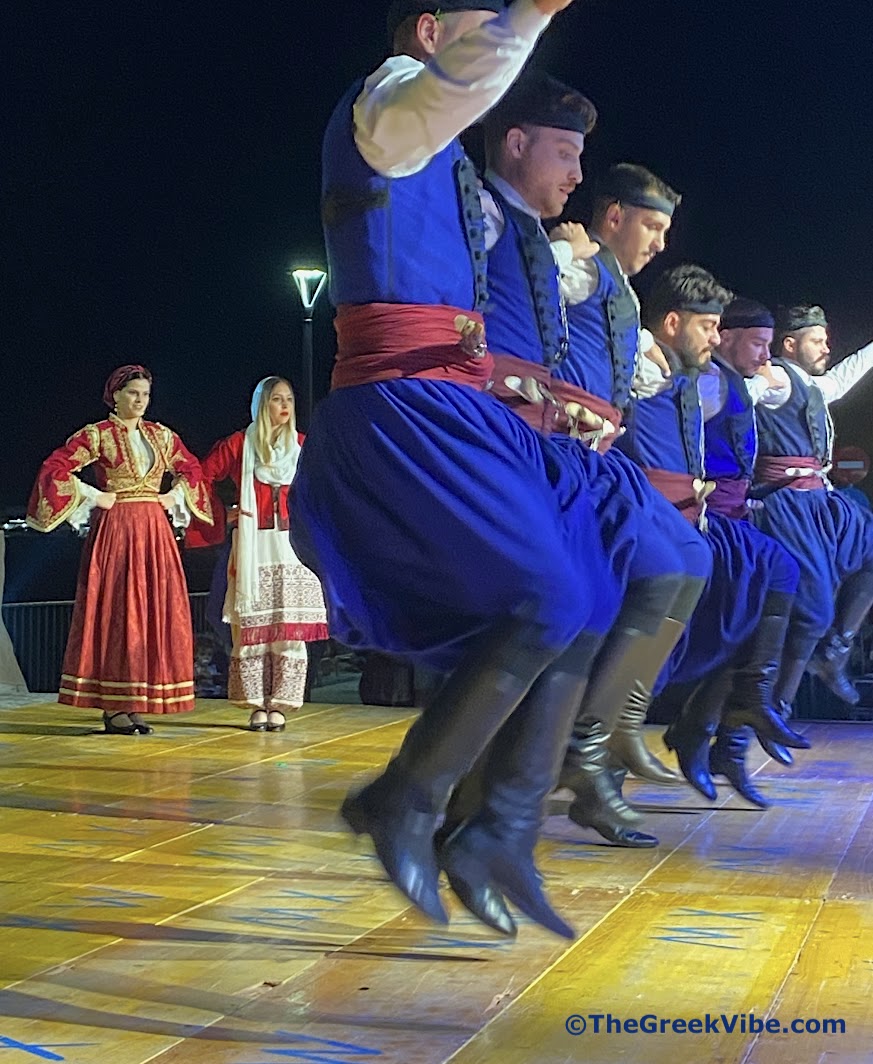
Knives were so important that towns on Crete like Hania, Rethymno, and Heraklion had a special district with knife shops known as the “machairadika”. The production of Cretan knives started to dwindle in the mid-1900s replaced by revolvers (pistola).
The authentic Cretan knife today is a cherished gift offered at christenings, and weddings, but also a rare find for collectors and enthusiasts. For decades, the traditional knife from Crete was also a prized gift for dignitaries. Cretan knives were given as gifts to heads of state and leaders, including Mussolini, Hitler, US and Turkish presidents.
And then there were the vendettas… a local form of ‘justice’ which was very common on Crete and in Mani in the Peloponnese. Actually many Maniots are descendants of Cretans.
To be prepared in a time of vendettas, men and many women too carried a Cretan knife because feuds and disputes were (and still are) very common; usually about herding, stolen animals, or matters of the heart. The proud Cretan would (and in some cases still does) always seek justice. So much so that entire villages on Crete (and in Mani) were abandoned after rivalling families killed each other off.
Some of the greatest vendettas were crimes of passion and here too the Cretan knife took the lead role.
►Erotokritos: The Cretan Tale of Love
The Cretan Knife: From Vendetta to Souvenir
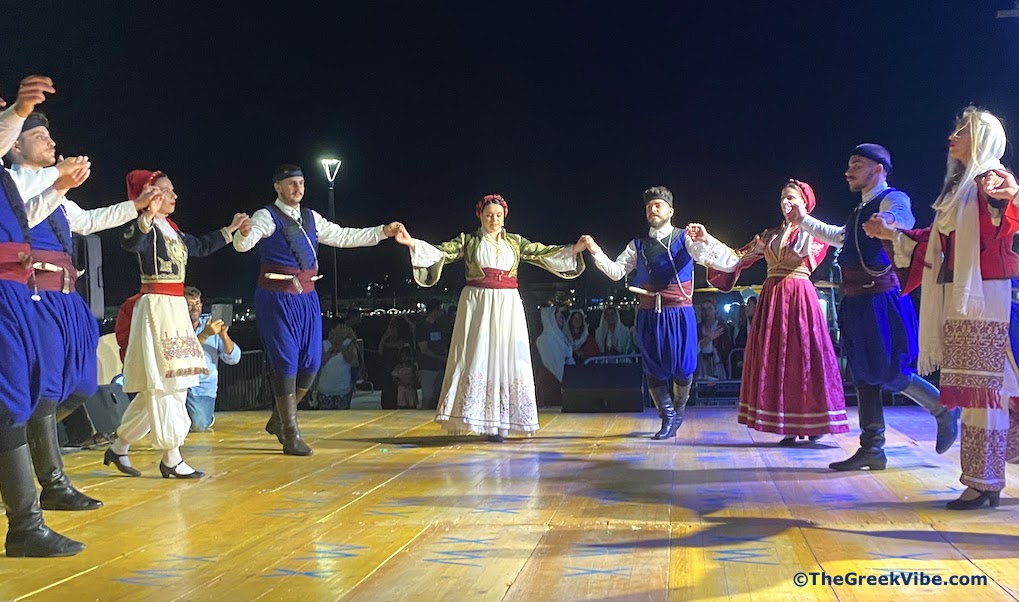
You have to understand that back in time, family honor came above all else. Some vendettas lasted for generations and it was up to the head of the family to defend and avenge perceived crimes against them.
Back in the day, and particularly in the smaller, remote villages, the code of honor was crystal clear: an eye for an eye. To understand how deeply rooted the need to avenge a crime against the family was, the “duty” of retaliating was often passed on to the elder child.
Vendettas were very common on Crete up until the late 1980s. As a way of putting an end to the vicious cycle of violence, many families entered so-called “koubaries” either through marriages (best men) or christenings (godfather), and therefore became family.
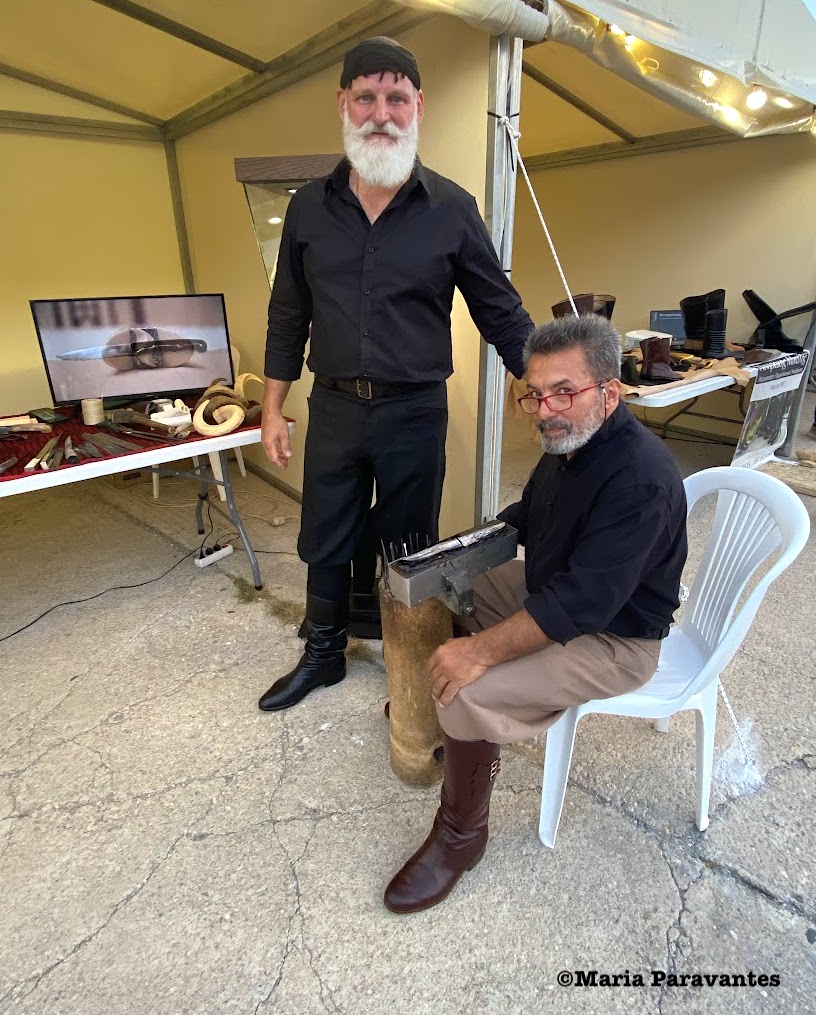
Cretan Knife: The Symbol
And so the Cretan knife became much more than a tool, it was a much-needed weapon, it defended one’s honor, it reflected the owner’s social status and it has today become an integral part of Cretan heritage.
Cretans buy traditional knives and families on Crete are very proud of their heirlooms, knives passed on to them by their forefathers.
During my recent trip to Sitia, Crete for the “Diktynna Festival of Culture, Tradition & Arts”, I met with Petros Vergadis, a tall, handsome Cretan dressed in black and wearing of course the traditional Cretan boots known as “stivania“.
“The Cretan knife,” he told me, “is an ornament for men… a personal item, a work of art.” I am very grateful to have met Vergadis, who introduced me to one of the last traditional Cretan knife-makers, Stavros Paterakis. The two shared their experience and insight and so here today I share with you what I learned about these beautiful works of art.
► Discovering the Best of Crete in Authentic Sitia
The Genuine Cretan Knife
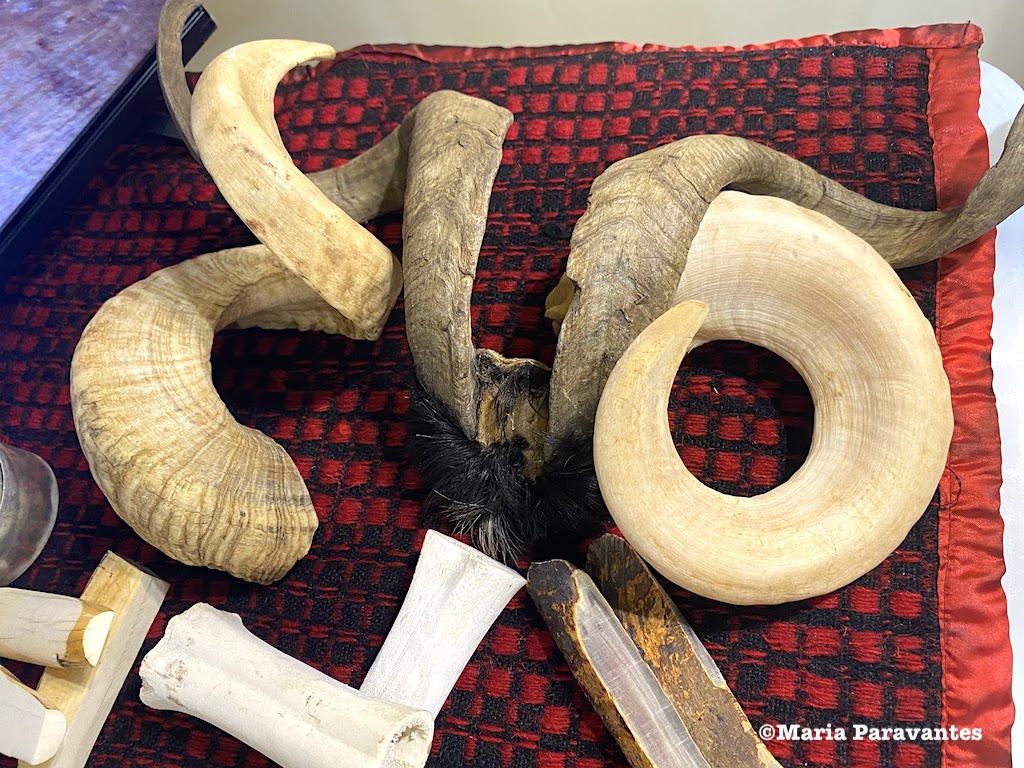
A walk through any of Crete’s popular towns such as Chania, Heraklio, or Rethymno and you’re bound to find dozens of knives sold as must-have souvenirs. But beware, these have absolutely nothing to do with the genuine Cretan knife. Crete-born historian Eftychis Tzirtzilakis has conducted extensive research into the Cretan knife and many details presented here come from his studies.
“The Cretan knife is considered a piece of jewelry for the male,” Vergadis tells me. “But it is also a symbol of friendship and respect and unlike the gun, making and using the knife requires great skill.”
The silver knives and sheaths which we see today worn with traditional Cretan dance outfits was a rare sight. Usually knives were worn by military leaders or prominent men and only on special days.
What Makes the Cretan Knife Unique
There are very few craftsmen on Crete still making handmade Cretan knives and these should not be confused with the mass produced variety.
Singling out a genuine Cretan knife is no easy task. Read on to understand what to look for. Above all: looking beyond the obvious. Let the knife “speak” to you, touch you, says the experts.
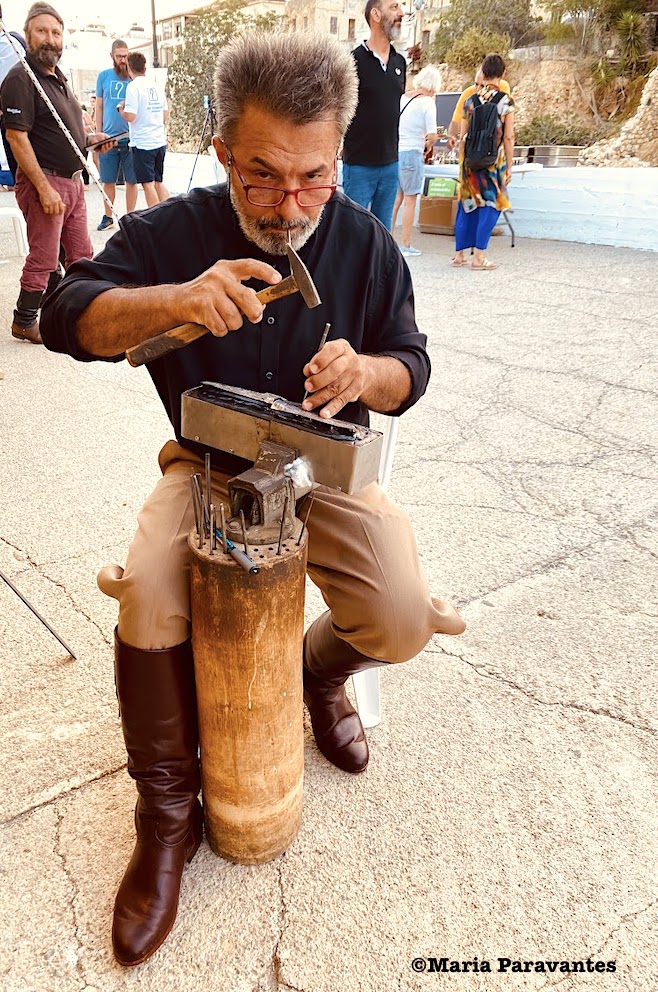
▶️ The handle or “manika” is usually made of animal bone or horn, while handles for the wealthier Cretans were made of ivory. The dark-handled knives known as “mavromanika” are special. They are made from black horns and these knives are believed to have special powers, so much so that if the user carved a circle in the ground and stepped inside, he would be protected from all evil (so the story goes).
▶️ The blade or “lepida” is made of iron or steel and is turned upwards very similar to the traditional Greek “tsarouchi” shoes which were worn in the past and still today by the striking “Evzones” or “Tsoliades” (Presidential Guard) in Athens.
▶️ The genuine Cretan knife always has a carved T-shaped notch on the blade while the handle ends in a V-shape which allows the user to insert a finger and have a better grip.
▶️ Depending on the owner and his personality, the knife blade and sheath are intricately engraved with symbols which could include snakes, leaves, ships, branches, trophies, cross, flowers, and birds, among others.
Vergadis stresses that the “mantinada” verse (small impromptu poems in rhyming verse) we see today on Cretan knives was added much later, after the 20th century, initially to inspire and to motivate the user ahead of battle, and later in time for tourist purposes. Today, all souvenir Cretan knives have a small verse inscribed on the blade. Back then they only had the date.
👉🏼 Dream of visiting Greece? Start planning
▶️ A very important part of the Cretan knife was the sheath (“foukaria”). The wealthy had intricately designed silver knives and sheaths while the laymen used leather holders. The silver sheathes usually had the head of snake-dragon engraved on them. Local craftsmen say the sheath is half of the knife and should be made by an artisan silversmith, never by the knife-maker.
▶️ The sheath was always attached to the leather “selachi” or “silacliki” or belt.
▶️ Inside the V-shaped finish of the handle, men’s knives also had a hidden “masia” – a tiny tong which was used to light the coals of the narghile (hookah).
▶️ The width of the silver band or “tseberliki” connecting the blade with the handle is of utmost importance.
▶️ The “kadena” or silver chain and the “founta” usually with gold coins attached.
Women & The Cretan Knife
During our talk, Vergadis showed me an exquisite, slender white knife. This, he told me, is a woman’s knife. I had no idea to be honest. Never though females would carry knives at all, and yet, not only did they have their own knives, these were items of sheer beauty.
Vergadis goes on to tell me that in the not so distant past, Cretan males would gift a knife to their fiancées “to be used to protect their honor”. The women would conceal the knife under their clothes. Just in case!
►Celebrating Agios Yakinthos – Greece’s Saint Valentine- On Crete
A woman possessing a “pounialo” – the stiletto-like knife – also indicated that she was taken … so don’t mess with her! Many such dares have led to bloody and deadly vendettas between families on Crete. These later became legendary tales, poems, and songs.
The Cretan Knife and the Mantinada
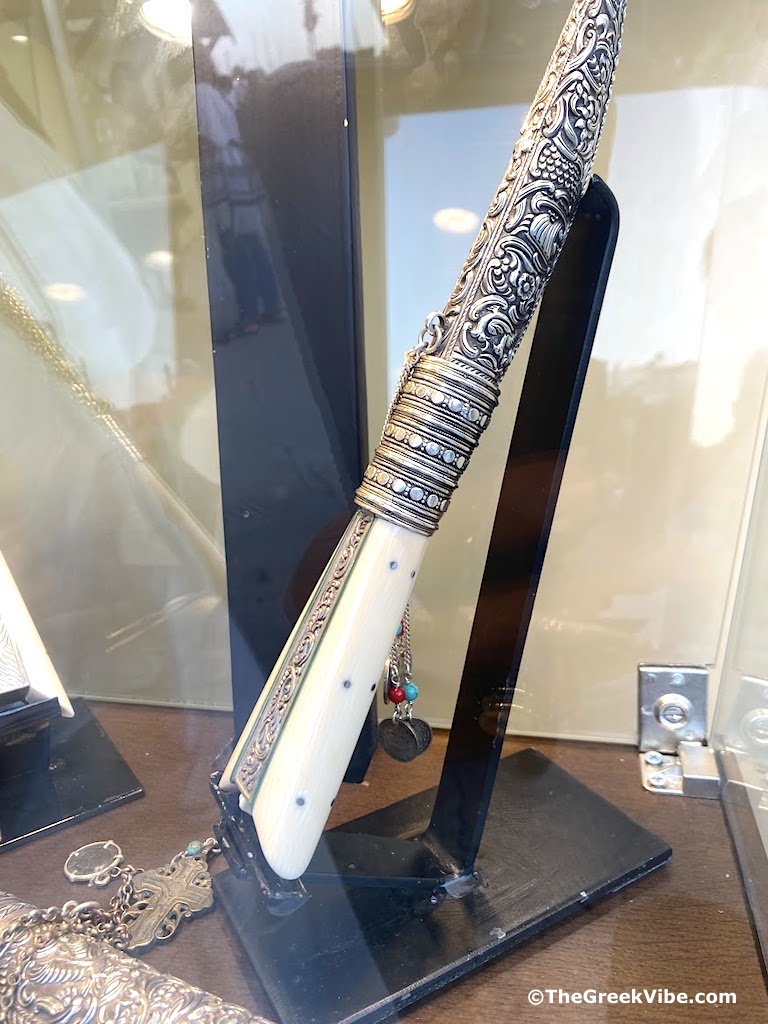
The central role of the Cretan knife in daily life and in Cretan culture is obvious in the literally hundreds of “mantinades” (traditional couplets in rhyming verse) written about it. One reads: “A black knife from Crete, a token of my friendship, which can easily become an enemy and symbol of my valor.”
Or another favorite says: “A knife from our beloved Crete, a token of our friendship, which can also wash away all acts of betrayal.”
Both mantinades express the meaning the Cretan knife holds as both a symbol of companionship and an easily used weapon.
As a gift to a woman a mantinada might say: “One hand in the fire and the other on the knife, I will either burn or cut myself or make you my wife”.
Saving the Centuries Old Knife-making Trade
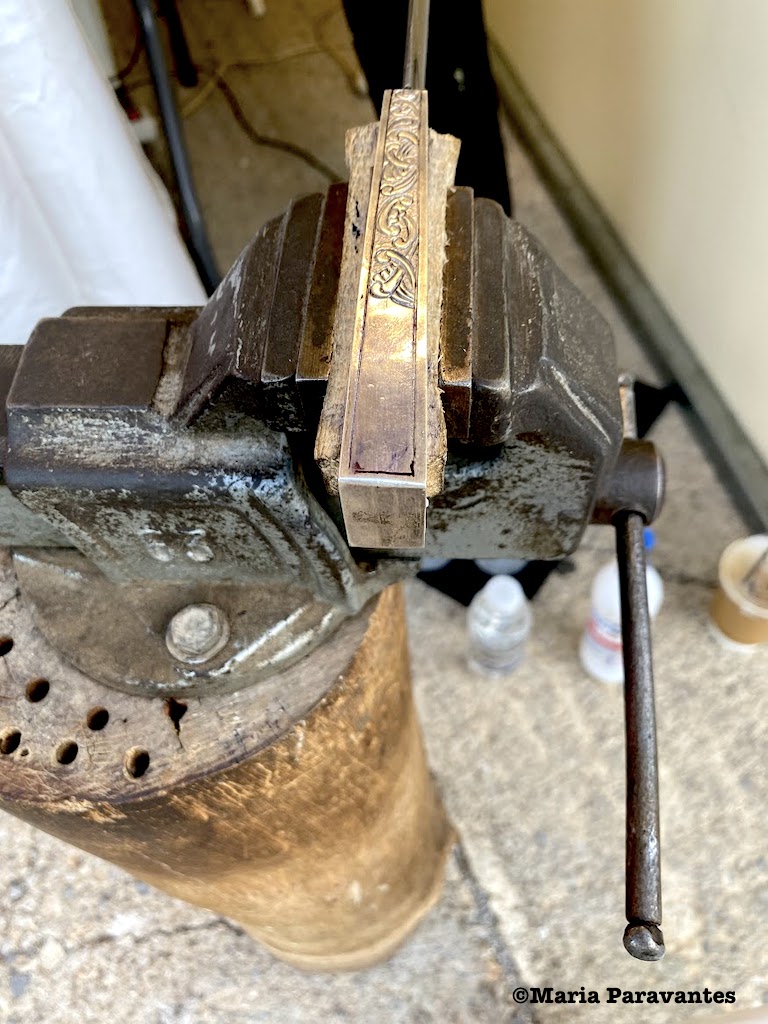
For the Cretans who respect their homeland and traditions, passing on the secrets of knife-making should be a priority. It has survived for centuries but now faces a very bleak future, if any.
“The next generations are the only ones who could save the craft from demise,” Vergadis told me. “A centuries old craft is in danger of disappearing,” he says.
And sadly, today there are at most a handful of craftsmen still practicing the trade. They say that very few young people choose to learn knife making because it requires a long apprenticeship. Knife-making, they say, is all about patience, observation, attention to detail, and “meraki” which roughly translates into “undying love for what I do”.
Vergadis tells me that knife-makers are so engaged and attached to their knives that they could single them out from hundreds.
Where to Find a Genuine Cretan Knife: Maria’s Tips
✓ If you want to buy an authentic Cretan knife visit Stavros Paterakis Knives workshop in Chania, but also O Armenis, Eftychis Sartzatakis, and Palamianakis, are some of the few.
✓ You can see original Cretan knives at the Benaki Museum, the Historical Museum of Crete, the Historical Archive of Crete in Chania and the Basil Papantoniou Foundation
✓ Cretan knife price: a basic Cretan farmer’s knife could start from 85 euros. A traditional “saita” Cretan knife can reach thousands of euros when engraved, made by hand and with materials such as silver and ivory including case. The cost for a decent handmade silver plated knife would range from about 350 euros to 800 euros.
♫ I end today’s post with a very popular Greek song about a very special knife “To Machairi” performed (1979) by Vassilis Papakonstantinou to the music of Thanos Mikroutsikos and the lyrics of poet Nikos Kavvadias.
Be well. Travel!
❤️Follow The Greek Vibe on TikTok too!
Enjoyed this Post? Share and Pin it!
